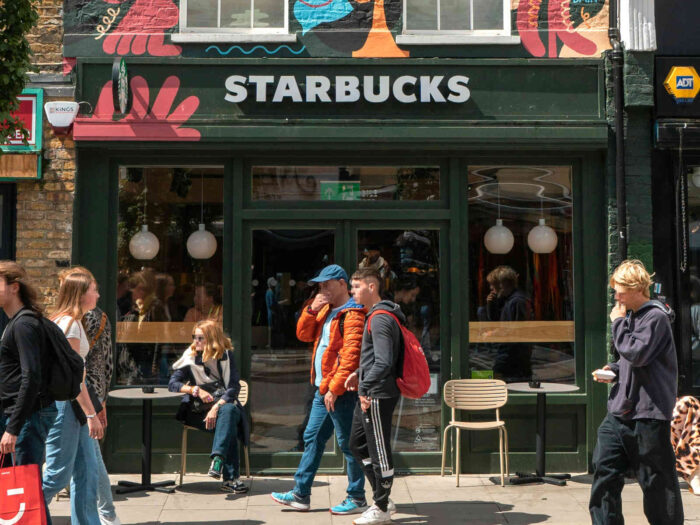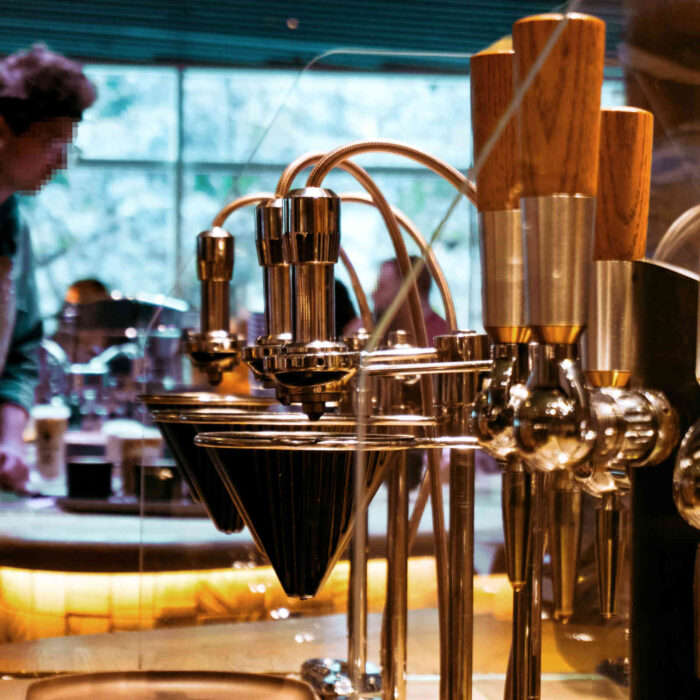
Starbucks’ organizational culture (company culture) characterizes the coffeehouse business. The company’s organizational or corporate culture influences personnel and work performance through core values and behavioral expectations in the business organization.
Starbucks’ organizational culture permeates all business aspects, including the operations of franchisees and licensees. Coffeehouses are where Starbucks’ work culture is most easily observable. How café employees work and interact with customers indicate this corporate culture.
The warm and friendly ambiance in coffee shops is part of the company culture’s contribution to strategic differentiation against competitors, including coffeehouses, like Tim Hortons and Costa Coffee, and foodservice companies, like Dunkin’, McDonald’s McCafé, Wendy’s, Subway, and Burger King.
This organizational culture supports Starbucks’ mission statement and vision statement and related goals through cultural influences on workplace relations for successful branding, franchising, and licensing.
Starbucks’ organizational culture is a key success factor, considering that the company sells not just food and beverage, but also the experience of buying and consuming these products. The business uses this corporate culture for competitiveness in the coffeehouse chain market.
Starbucks’ organizational structure (business structure) enables the optimal application and observance of this company culture, despite the diverse managerial approaches and business cultures of franchisees and licensees.
Starbucks’ Company Culture Type & Traits
Starbucks’ organizational culture is a culture of belonging, inclusion, and diversity. These cultural characteristics emphasize positive workplace relations. The traits and values of Starbucks’ culture are:
- Servant leadership (“employees first”)
- A relationship-driven approach
- Collaboration and communication
- Openness
- Inclusion and diversity
Servant Leadership. Starbucks has a servant leadership approach, which characterizes the behavioral manifestation of the company’s organizational culture among leaders, including corporate leaders and team leaders.
In this approach, leaders, managers, and supervisors emphasize support for subordinates to ensure that every employee grows in the business organization. Thus, servant leadership as a cultural factor boosts human resource competencies.
This feature of the corporate culture translates to the employees-first approach, which aligns with the human resource development objectives linked to Starbucks’ corporate social responsibility (CSR), ESG, and corporate citizenship goals.
The company highlights the value of caring for employees as a way of optimizing human resource morale and customer satisfaction. Former Starbucks President Howard Behar developed this feature of the firm’s work culture because he believed that workers who are cared for are the ones who care about customers.

A Relationship-driven Approach. Starbucks also has an organizational culture that supports warm and friendly relationships. For instance, at the company’s cafés, baristas exhibit warm and friendly bonds with each other. This feature of Starbucks Coffee Company’s corporate culture extends to customers, who are also treated with warmth.
This work culture enhances business competitiveness and the core competencies discussed in the SWOT analysis of Starbucks. Through emphasis on relationships in its corporate culture, Starbucks’ business organization develops customer relationships and the global coffee culture that drives consumer demand for the company’s specialty coffee products.
Collaboration and Communication. The work culture of Starbucks encourages collaborative efforts through effective communication. At Starbucks cafés, baristas clearly communicate with each other to fulfill orders. Also, they collaborate as teams to make the order fulfillment process efficient.
Through collaboration and communication, the organizational culture supports efficiency in business processes and the effectiveness of Starbucks’ operations management. These traits of the company culture contribute to quality of service, positive customer experience, and coffeehouse business cost-effectiveness.
Openness. Openness is among the values included in Starbucks’ organizational culture. In the company’s early years, employees had a traditional and old-fashioned work culture of hesitation in speaking up to their superiors. To address this issue, former Starbucks President Behar introduced open forums to encourage staff members to ask questions and communicate with superiors. A company culture of openness developed as a result.
Through openness as a cultural characteristic, Starbucks encourages knowledge-sharing that empowers employees and facilitates innovation in product development and quality improvement in service provision.
Inclusion and Diversity. Starbucks has an anti-discrimination policy that shapes its work culture. This policy prohibits any form of discrimination based on gender, race, ethnicity, sexual orientation, religion, age, cultural backgrounds, and life experiences.
Through this feature of the organizational culture, Starbucks encourages information sharing and positive rapport among employees, as well as innovation based on diverse ideas. This cultural facilitation supports worker motivation and helps minimize turnover.
Through inclusion and diversity, the company’s organizational culture also makes customers feel welcome at Starbucks cafés. Such an extension of the work culture to include customers represents business efforts that value consumer preferences and the related sociocultural trends discussed in the PESTEL/PESTLE analysis of Starbucks.
A Note on Starbucks’ Culture
Starbucks has gone through significant changes in its organizational culture. These changes are based on issues and problems that leaders, like Howard Schultz and Howard Behar, identified in the early years of the specialty coffeehouse chain business. As a way of enhancing business performance, Starbucks instituted reforms in its company culture.
Today, the company’s work culture is a distinct factor that builds competitive advantages and develops a consumer population of loyal Starbucks fans from which the business derives stable financial performance.
Starbucks’ key traits and core values lead to a work culture that is unique and specific to the nature of the coffeehouse chain business. The internal cultural situation is reflected through Starbucks’ human resource development programs and baristas’ interactions with customers.
The main strategic management challenge lies in the effective implementation of this company culture in the human resources of the coffeehouses of franchisees and licensees, as these business partners have their own core values and approaches to human resource management and organizational culture development.
References
- About Starbucks Coffee Company.
- Belonging at Starbucks – Creating a More Welcoming Environment.
- Kucharska, W., & Karwowska, E. (2025). Company culture matters! Knowledge-driven companies’ way to innovations and sustainability. Social Sciences & Humanities Open, 11, 101268.
- Qin, W., & Saufi, A. (2025). Impact of corporate culture towards employee belongingness: An analysis of the literature. International Journal of Scientific Multidisciplinary Research, 3(2), 267-280.
- Starbucks Coffee Company Culture and Values.
- Starbucks Corporation Form 10-K.
- Ziliani, C. (2025). Loyalty strategies and the test of time: Barilla and Starbucks. In Loyalty Management (pp. 232-257). Routledge.